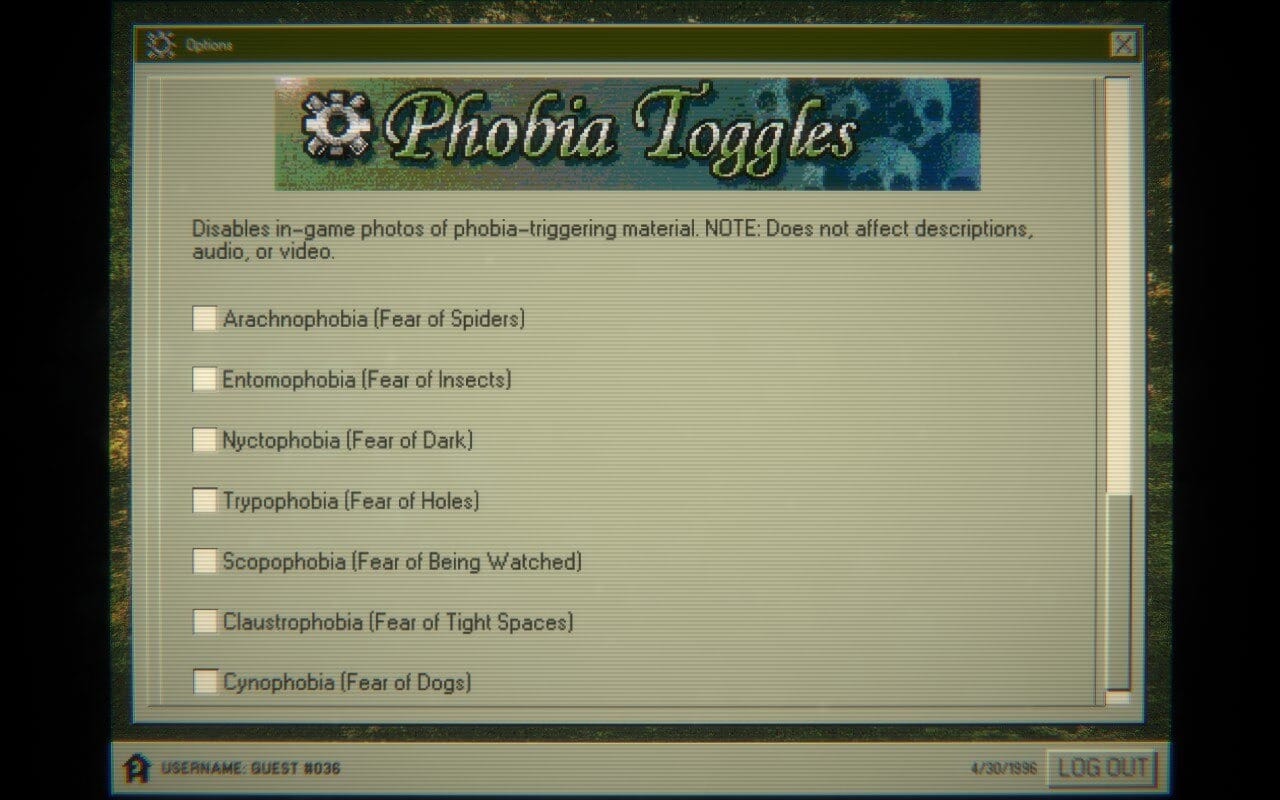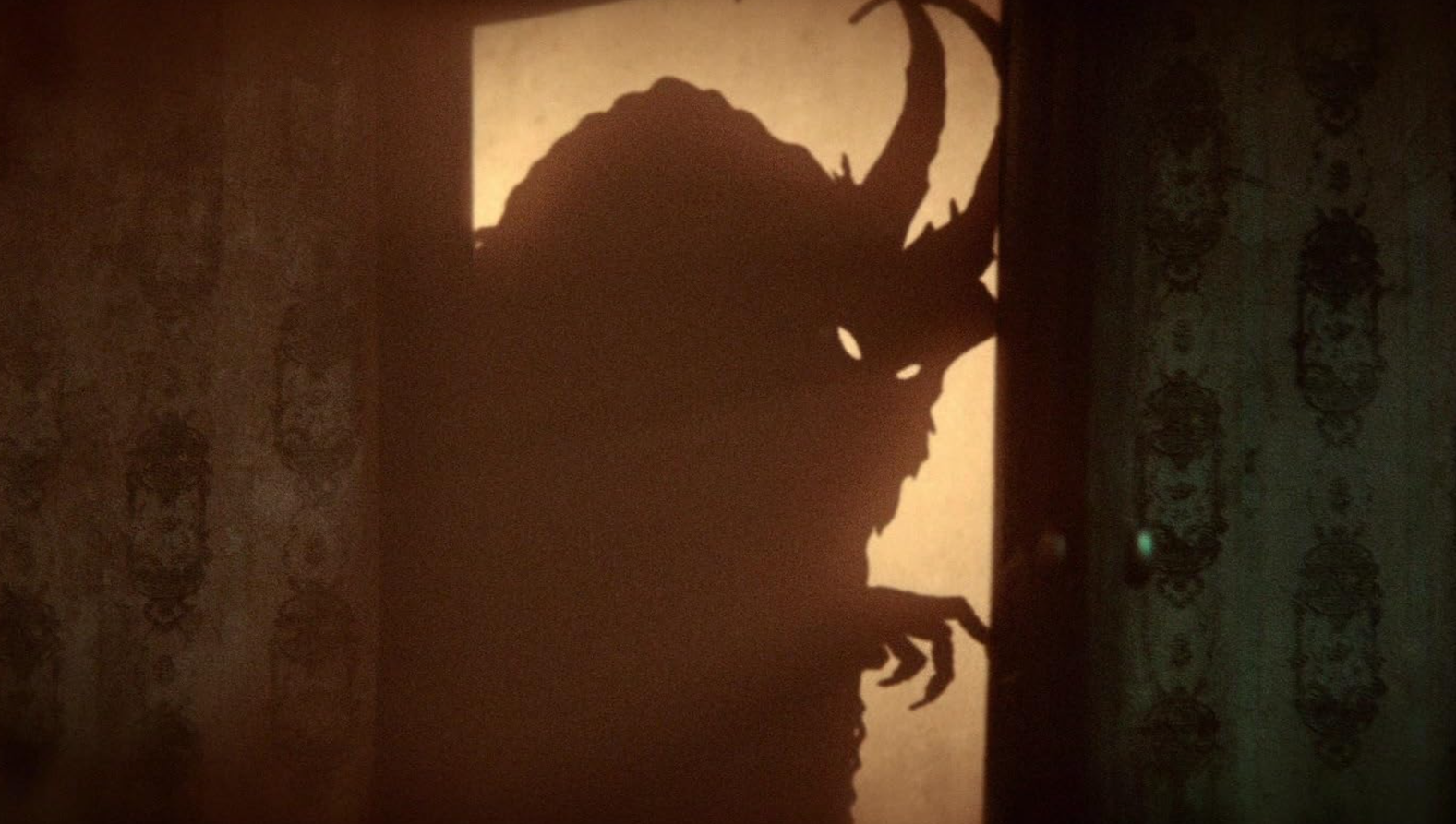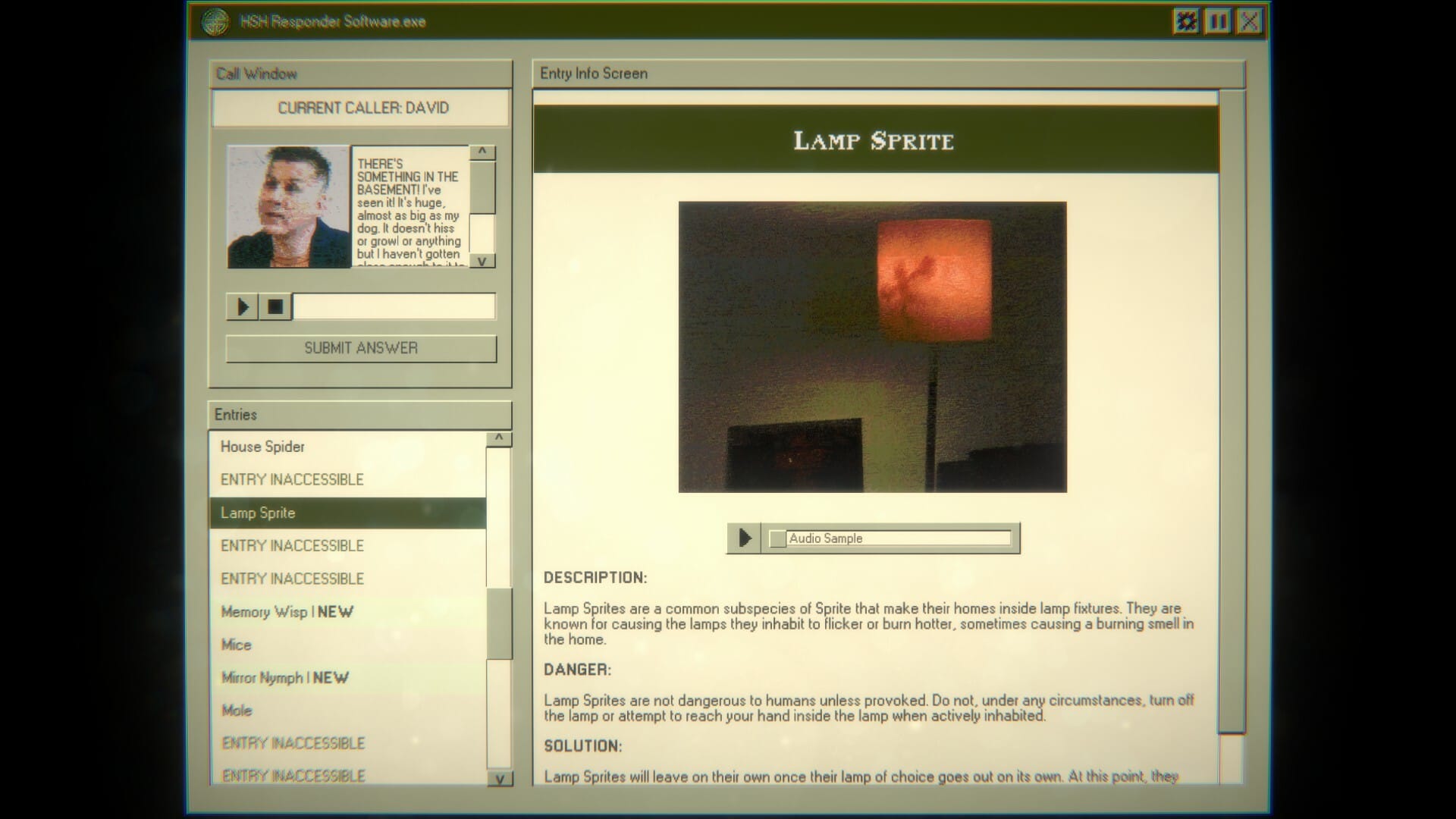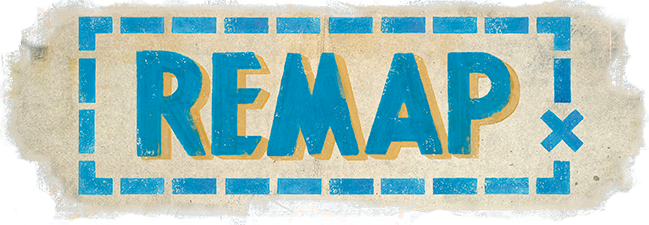Home Safety Hotline is an early 2024 gem, a game where you play as a customer support agent for an agency that deals with, well, home safety problems. What happens when somebody hears some noises coming from their attic, or a rat scurry across the floor? There’s no DIY YouTuber to help them out, so maybe, at least within this world, they'll call the hotline you work for, even if you’re not always very helpful.
You do your best, though, by puzzling your way through everyday household problems like mice and raccoons and identifying potential solutions. You'll eventually work up to trickier jobs with problems like False Artifacts (“Should a child or pet be left alone with a False Artifact they are at risk of being encased within”), Dream Weavers (“Dream Weavers are large, spider-like creatures known to weave dreams into reality”), and False Beets (“A swallowed False Beet cannot be removed without killing its host”).
You know, extremely normal stuff.
Home Safety Hotline walks a fun tone, jumping between tense and humorous —and sometimes going for both at once. More uniquely, it's a horror game that’s very sensitive to people’s phobias. We've been seeing an increased focus on accessibility options in games that address specific phobias like arachnophobia. But in games meant to scare you? That’s far less common.
That’s part of what makes Home Safety Hotline especially thoughtful. While the game still wants to scare you, players can tailor their experience based on their own phobias. Here’s how it looks in the game:

This is catnip to me, and Home Safety Hotline designer Nick Lives was happy to oblige my curiosity. We talked about the game’s approach to fear, phobias, and the different relationships people have with horror in various mediums. Playing horror games, turns out, is not the same as watching a movie!
Remap: To the degree that you feel comfortable talking about it, do you have any phobias yourself, stuff that made you not want to include it in the game or find ways around it?
Nick Lives: Oh, I have a huge laundry list of phobias and am indeed quite an anxious person overall thanks to having OCD. But unlike my wife's arachnophobia, none of my phobias are generally able to be triggered by imagery alone, so I try not to shy away from including most of my phobias directly in-game. I find it both therapeutic and the most effective way to create horror that others can relate to.
The closest thing I have is a somewhat extreme phobia of dental imagery, and I suppose none of that is in the game, so there might be a bit of subconscious phobia minimization happening there. We also in general tried to stay away from depicting anything real medical or gory just because we wanted this game to be good entry-level horror, in the vein of Gremlins or Krampus.

Can you talk me through the decision to include so many phobia options in a game about fear and scares?
Lives: We're really interested overall in sharing our love of the horror genre with more people, and I think some people write off their interest in the genre because they don't like having a sudden spike of actual, tangible anxiety when watching something that's meant to be entertaining. I think long-time horror fans have a fundamentally different experience when they watch horror for entertainment versus confronting actual, real-world fears. The two get conflated a lot, so this is meant to help bridge that gap for people dipping their toes in the genre or help existing horror fans with more extreme phobias still enjoy getting scared in a fun way.
I also think options like this even have the potential to be therapeutic in a way, since if you come to love a game you wouldn't have played otherwise thanks to a phobia, you might over time be able to lessen your phobia by opting into seeing it in the context of something you already love. You can face the harsher fears in your own time.
My wife in particular (who plays Carol in the game) helped me realize the importance of options like these, as she's an adamant fantasy fan but her arachnophobia keeps her from playing a lot of games in the genre she would otherwise love. I experienced a version of this myself in the context of horror, as I found the extreme anxiety I got from walking through haunts (horror walkthrough experiences that pop up around Halloween) was starting to outweigh the fun I had with them. I became super grateful for haunts that provided options for people who liked the scary atmosphere and set design but weren't down to be chased around by actors with chainsaws.
We're really interested overall in sharing our love of the horror genre with more people, and I think some people write off their interest in the genre because they don't like having a sudden spike of actual, tangible anxiety when watching something that's meant to be entertaining.
How late into the process did you consider adding the phobia-specific features? Did it end up influencing any of the design? I couldn't help but wonder if, say, the audio clips were once automatically played, instead of manually.
Lives: I remember it being pretty early on that we realized our game's mechanics would lend themselves easily to such options. Since the game's "puzzles" are heavily reliant on audio and verbal descriptions, the visual depictions of threats were already mostly playing a supporting role in atmosphere setting. It was very quick and easy to add the option in, and we just continued making sure the visuals didn't have any relevant information that wasn't also included in the description.
There definitely wasn't a point where the audio clips played automatically or anything like that. If anything, I think the option empowered us to include even freakier stuff like the Sprig Tree, the Dream Weaver, and the Fae Flu. We didn't have to worry about pushing anybody too far, since we gave them the tools to moderate their experience.

Does your love for horror extend outside of games? I don't think it's unusual for people to have, say, a different relationship with horror movies than they do with horror games.
Lives: Absolutely. We adore horror in every medium, but, in particular, I do find myself watching more horror films than playing horror games, if only because it's easier to wind down with. I think you're definitely right that people can have a pretty different relationship with horror movies and horror games simply because games can be a lot more directly intense and stressful.
It took me longer than I'd like to admit to get the courage to finish games like Outlast or Resident Evil 7, which can be very viscerally intense and anxiety-inducing experiences thanks to their cat-and-mouse style mechanics. It would definitely be harder for games with such intensity by design to pull back on thrills without offering a fundamentally different experience.
This interview was edited for clarity.
